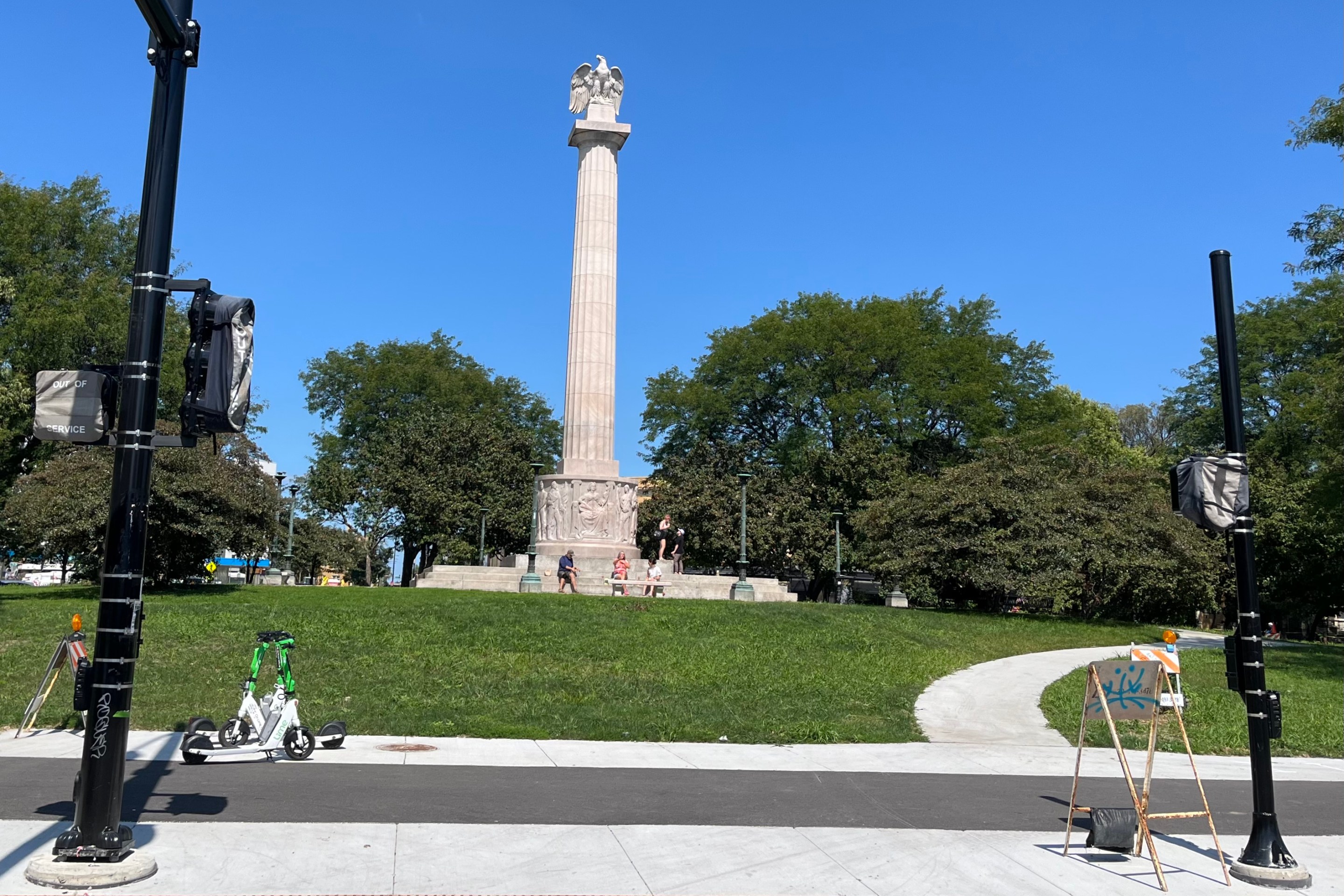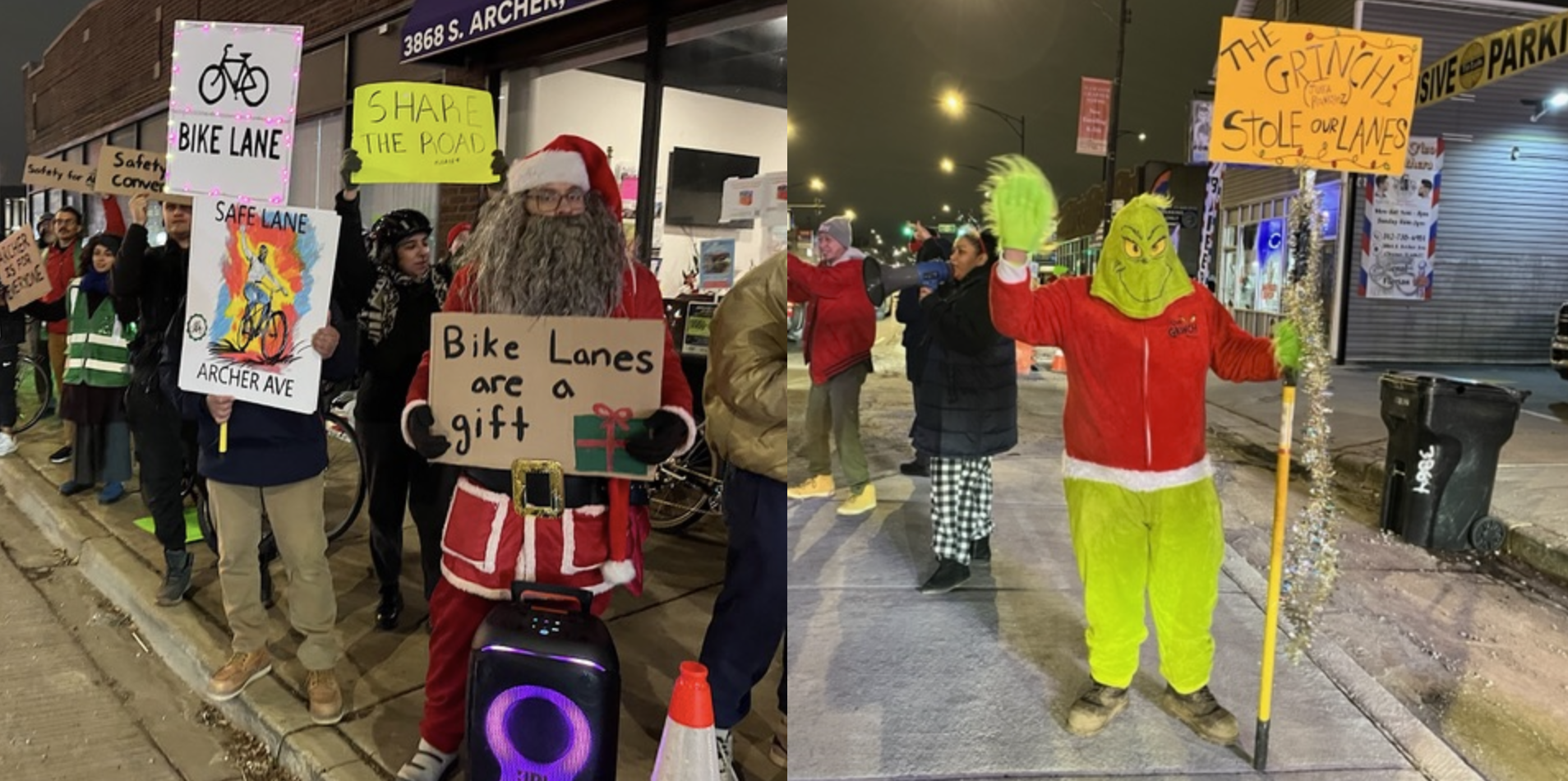In a recent blog post, Metropolitan Planning Council associate Yonah Freemark presented an ingenious visual that makes it obvious how BRT will dramatically improve transit access along the corridor.
Using data from Mapnificent, which shows the area you can reach with transit from any point in a given time, Freemark created a map that illustrates how the area of the city accessible within 20 minutes of the future Ashland/Cermak BRT stop will expand after the service launches. This location is a mile north of the halfway point of the proposed 16-mile route at31st Street. The regions shown in light blue are currently accessible by CTA trains and conventional buses, plus walking; the dark-blue areas will accessible once BRT is in effect.
One the Ashland BRT is in effect, CTA riders will be able to travel almost twice as far north or south from Ashland/Cermak in the same amount of time, since the new buses will run almost twice as fast as the current #9 Ashland bus, 15.9 mph instead of 8.7 mph. The dark-blue dots show that, because BRT will increase access to rail lines, new ‘L’ stations will become accessible within 20 minutes.
| Existing—no BRT | Future—with BRT | Difference |
Number of jobs accessible by transit within 20 minutes from Ashland and Cermak | 56,943 | 107,205 | 50,262 88 percent increase |
Number of people accessible by transit with jobs* within 20 minutes from Ashland and Cermak | 38,135 | 67,364 | 29,229 77 percent increase |
Number of jobs accessible by transit within 20 minutes from Ashland and Fullerton | 56,959 | 115,883 | 58,924 103 percent increase |
Number of jobs accessible by transit within 20 minutes from Ashland and 63rd | 13,686 | 25,102 | 11,416 83 percent increase |
Freemark also created the above table, using data from the U.S. Census Longitudinal Employer-Household Dynamics report, that shows how fast bus service will increase the number of jobs that are accessible within 20 minutes from Ashland/Cermak, as well as the number of potential employees who live within 20 minutes of the future station. Not only will there be 88 percent more jobs that employees can get to from the station in that timeframe, employers will also have a potential hiring pool that's 77 percent larger within 20 minutes of the stop. The chart also shows that the number of accessible jobs will increase by 103 percent from Ashland/Fullerton and 83 percent from Ashland/63rd, stations that will come online during the second phase of BRT implementation.
Better mobility and access to job opportunities are compelling reasons to get behind the CTA’s plan, and Freemark’s map and chart help make these benefits obvious. “As people become more familiar with faster and more reliable BRT, support will surely grow,” he concludes. “It is likely that, as the city’s BRT project gets underway and the benefits of the transportation mode become obvious, the percentage of people on board with BRT will only increase.”




